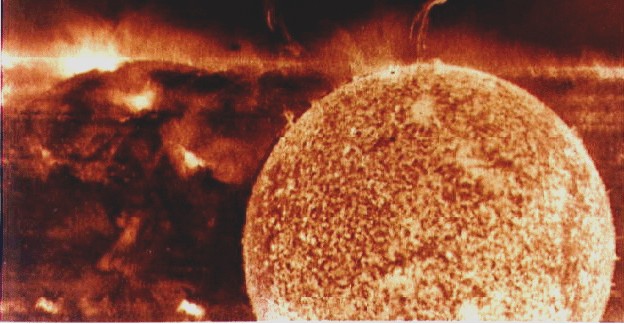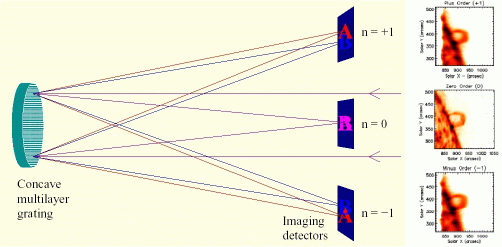
| Introduction to the Multi-Order Imaging Spectrograph |
|---|
A multi-order imaging spectrograph is an imager that also allows spectral information to be obtained with the aid of three diffraction orders. Uniquely, there is no slit as with a slit spectrometer such as SOHO-CDS. Because there is no slit to raster, all the data obtained is co-temporal, allowing dynamic events to be observed with spectral data in an unprecedented way. It is an instrument based upon this concept that is proposed for the Solar Orbiter EUI (Extreme Ultraviolet Imager).
The three orders that are observed are equivalent to three projections of an imaginary λ,x,y data cube. A relation exists in the form of the Fourier Slice Theorem that allows these three projections to be turned into that λ,x,y data cube, thus enabling spectral information to be obtained from three orders.
Slitless spectrographs have been used in previous years, most notably in the NASA-Skylab missions of the 1970's. Here, only the +1 order was observed, and was done so over a large wavelength range. This resulted in confusion as to which spectral line attributed to which part of the image, as shown below.

|
|---|
| Figure 1: Example of slitless spectrograph output taken from Skylab S082A. Notice that there are multiple wavelength images of the sun dispersed across the image. |
Because of this ambiguity, the proposed instrument would image over a small passband with a maximum of one or two spectral lines. An illustration of a multi-order slitless spectrograph is shown below, along with what one would expect to observe.

|
Figure 2 : An Imaging Spectrograph and the three-order output of an AR-loop on the N-W limb that one might expect to see. |
|---|
The addition of two further orders than in
the Skylab spectrograph allows for far more information to be gathered,
particularly spectral information which can be extracted in a number of ways.
(see
Preliminary Results)